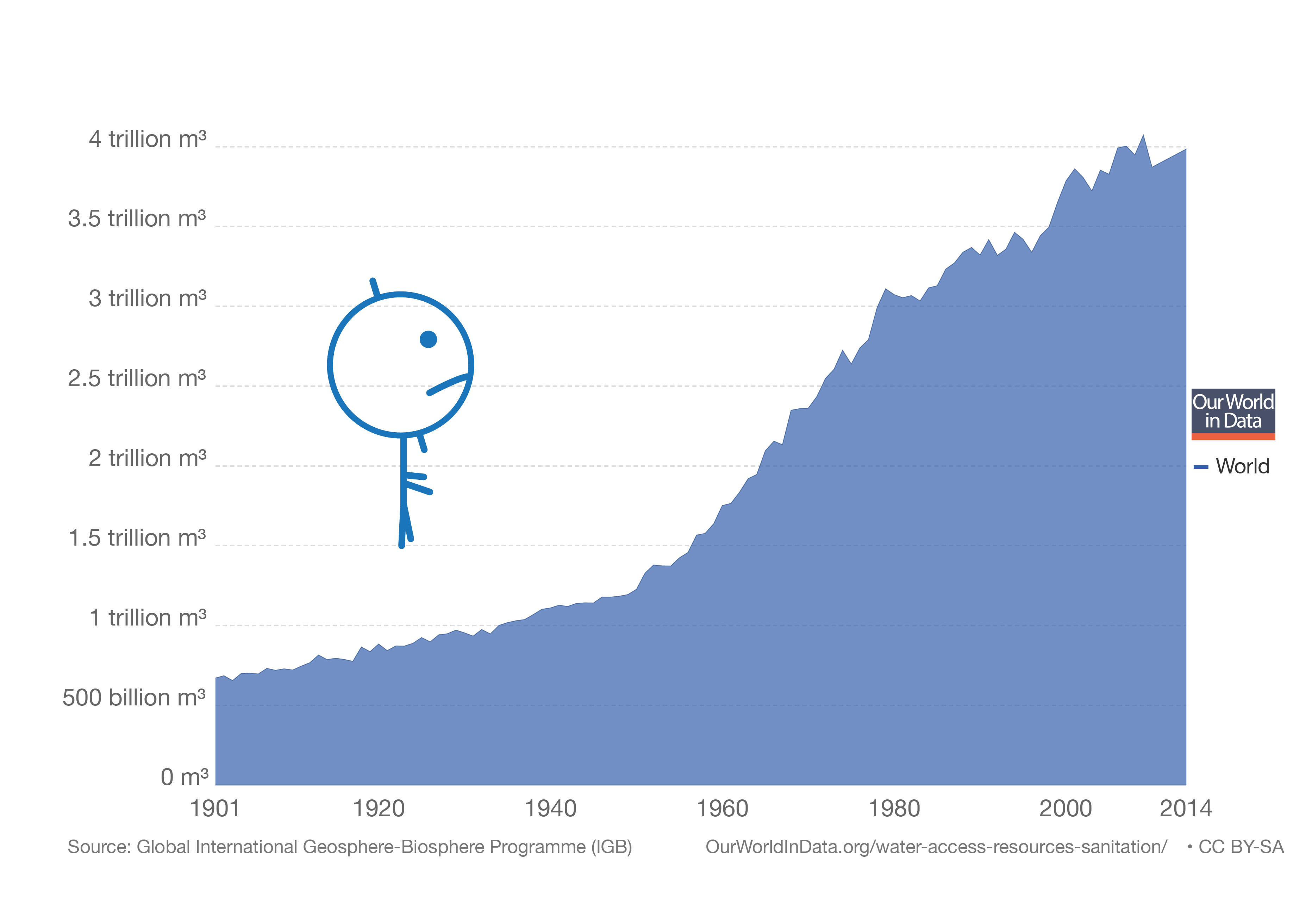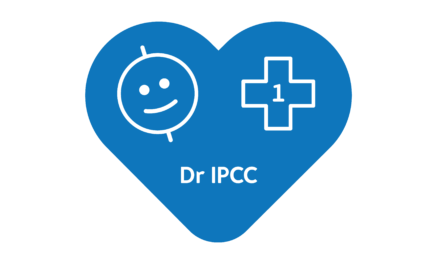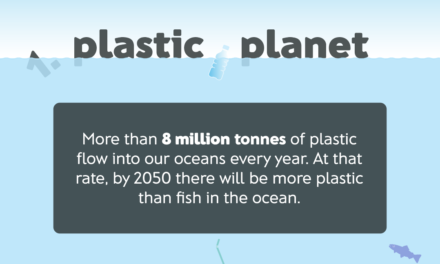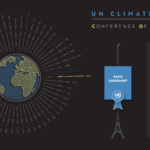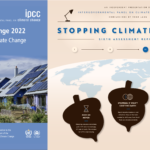I’ve Had a Few Plumbing Issues of Late (Freshwater Use)
Bluey’s been feeling blue. On the advice of the doctor, he’s taken it upon himself to visit nine specialists—all experts in their respective ‘planetary-boundaries’. Bluey wants to find out exactly what’s going on.

For more context generally and a description of why we’re doing this series, check out ‘My Climate Change Metaphors‘.
____
Bluey here,
Yesterday morning was about assessing whether my plumbing was in good working order “now and into the future”. This was done primarily for you humans but I like to think — just maybe — also for the infinite freshwater species and ecosystems that call me home.
Water covers about 70% of my body, but freshwater — the stuff that’s actually useful to you humans — is quite rare, making up only about 3% of my blue stuff. Even then, two-thirds of that small percentage is effectively useless, frozen in glaciers or in hard to find nooks and crannies. That, however, hasn’t stopped it being consumed at increasingly breakneck speeds. You humans use about 4,600 cubic km of water every year, of which 70% goes to agriculture, 20% to industry and 10% to households.
Global freshwater use over the long-run (Source: Our World in Data)
The experts
Once again, I was lucky to have a couple of expert specialists guiding me through yesterday’s session: Dr Pekel et al and Dr Mekostra. Their assistant, Nurse Vörösmarty, was around somewhere too, but because he was collecting biodiversity data, couldn’t join us ’til later.
Let’s start with some context. Back when I first fell blue, Dr Steffen (Doc to me now) updated his predecessor’s fixation on my aggregate totals of freshwater. To this day, some old-timers think aggregate totals provide the best freshwater metric, but as Doc revealed, regional river-basin metrics are now “a valuable additional measure”. Doc reckons they might even provide a more accurate way of “integrating my global problems with human regional ones”.
How exactly?
Well, river-basin metrics measure “maximum rates of blue-water withdrawal by humans along rivers, based on the amount of water required in the river system to avoid regime shifts in the functioning of flow-dependent ecosystems”. In simpler terms, it’s a measure of how sustainably humans remove my river freshwater and whether they’re keeping things in balance or not. By the way, ‘blue water‘ is the fancy name for water — or increasingly lack thereof — in rivers, aquifers and groundwater.
My pilot tests
Dr Pekel et al squeezed me into the MRI ‘satellite scanner’, and told me to hang on. On exiting about a day later, sure enough, there he was again.
“Bluey, your total surface freshwater is greater than I’d expected. It now covers almost 3% of your entire body mass — that’s the good news bud”.
OK…
“The interesting news, however, is not the extent but actually the change of that freshwater distribution. Having now had the chance to cast my eyes over your historical records, I can confirm the following: between 1984 and today, there really has been a striking pattern of surface water change”.
All those damn human dams I’d thought…
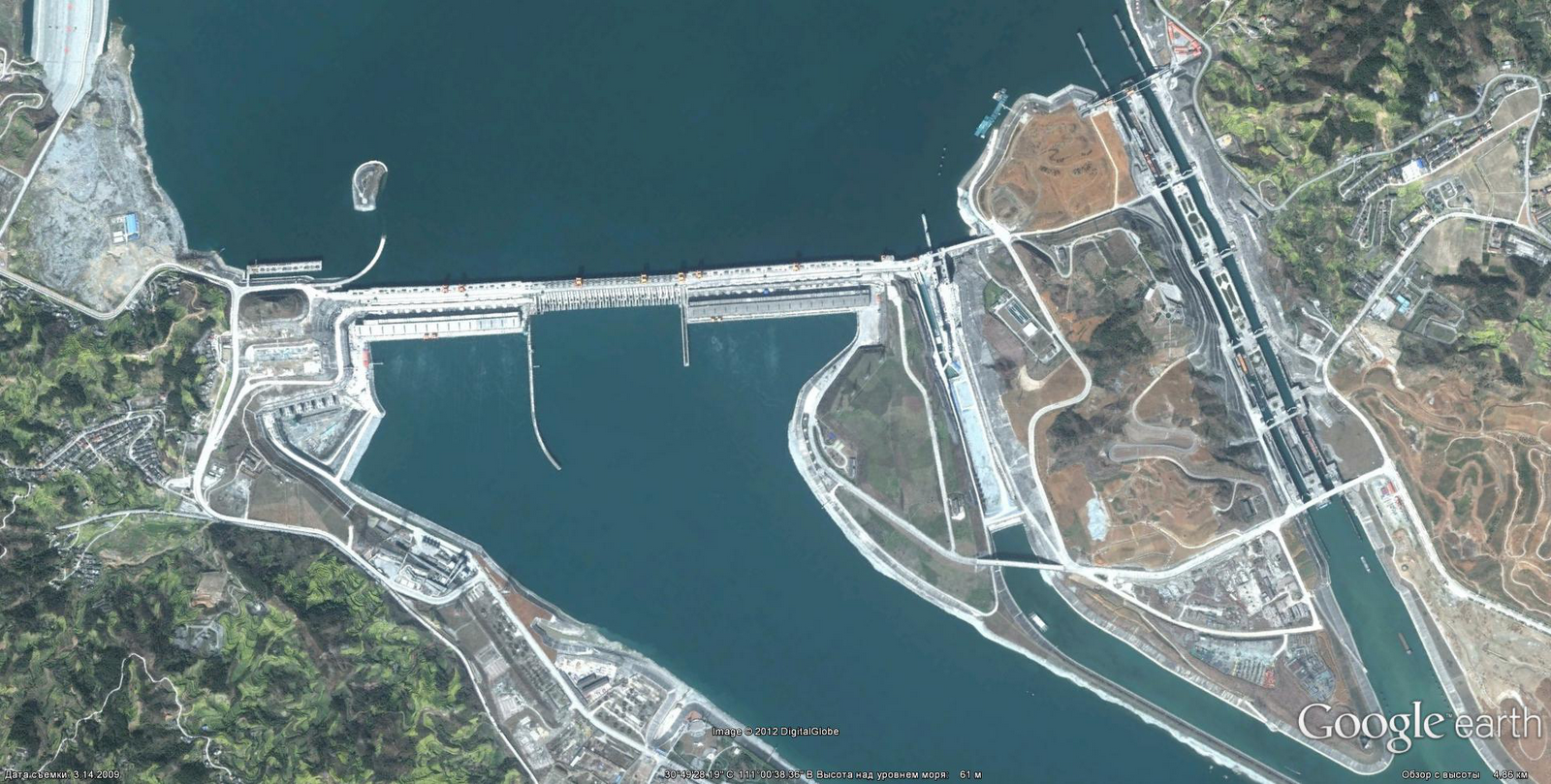
Three Gorges Dam, China (Source: Google Earth)
In hindsight, Dr Mekostra complemented Dr Pekel well. For one, he had more tact, and two, his area of expertise concerned seasonal fluctuations of water consumption by humans rather than the annual metric offered by Dr Pekel. But where there’s good there’s sometimes bad. Dr Mekostra was undeniably the more human-centric of the two, striking an all-too-familiar tone: humans, not Bluey, were the focus of these investigations. His principal finding acted to confirm my suspicions.
“Blue-water scarcity is a fact of yearly life for about 71% of your human population Bluey… By comparing your results against previous years, human water scarcity has increased overall”.
I hadn’t said it but I’d wanted to. What about Bluey-water scarcity?!
Making sense of everything increasing
On the one hand, Dr Pekel had my aggregate freshwater increasing, but on the other, Dr Mekostra was telling me that water scarcity for humans was also increasing. After some head scratching, I still hadn’t worked it out — how could they both have been increasing? I bit the bullet, and asked. “Well, Bluey” said Dr Mekostra, “not everything should be judged at the meta level. Regional trends matter sometimes too”.
As Dr Pekel graciously confirmed, it was actually Dr Mekostra’s insistence to conduct variability testing throughout the year and regionally (rather than simply at annual intervals) that helped an indisputable trend to emerge. The penny had dropped: large groups of humans, somewhere, were acting unsustainably again.
“Bluey, you might yet ignore it, but humans, they mustn’t”.
Here’s my human-infested results in full:

Medical Report #7: Freshwater Use
Global Planetary Boundary: Maximum amount of consumptive blue water use.
Basin Planetary Boundary: Blue water withdrawal as a percent of mean monthly river flow. Low-flow months (Low-F), Intermediate-flow months (Int-F), High-flow months (High-F).
What’s also interesting — and not explicitly mentioned above — is that over 70% of my net permanent water loss had been concentrated in five primary regions: my Kazakhstan, Uzbekistan, Iran, Afghanistan and Iraq. To bring this to life, Dr Pekel had drawn upon the example of the Aral Sea. He quickly conveyed what can happen when, as he put it, “unregulated withdrawal of blue water and transboundary-policy issues clash”. In this particular case, from the unabated human pilfering of the Syr and Amu rivers.
I was not at all surprised to discover that the Aral Sea was just “one of a number of prominent examples where freshwater environments had quickly lost volume, become ‘hyper-saline‘ and decimated local biodiversity”. My Lake Urmia, Lake Chad and Lake Chapala were reportedly not faring too well either.
In terms of solutions, both firmly agreed that humans should place caps on blue-water consumption per river basin and also look to implement transboundary cooperation policies. By also focussing on other susceptible regions — such as my India, Pakistan, Libya and Somalia — Dr Mekostra demonstrated the importance of pursuing sustainable solutions especially in my most highly populated and traditionally volatile body parts. So Dr Mekostra’s results acted to drive home (for humans of course) the importance of sustainable freshwater use to ensure their maintenance of global security on my surface.
Dual threats
When Nurse Vörösmarty arrived in the examination room, he brought with him a genuine sense of gloom. He should’ve just stayed at home.
Synthesising two different perspectives—river biodiversity and water scarcity—the nurse provided ‘threat maps’ (including the below) in order to “schematically represent my body parts most at risk”. According to the Nurse’s figures, my Africa and central Asia were the “most threatened”. For example, my Ethiopia “contains 150 times less reservoir storage per capita than my North America”.
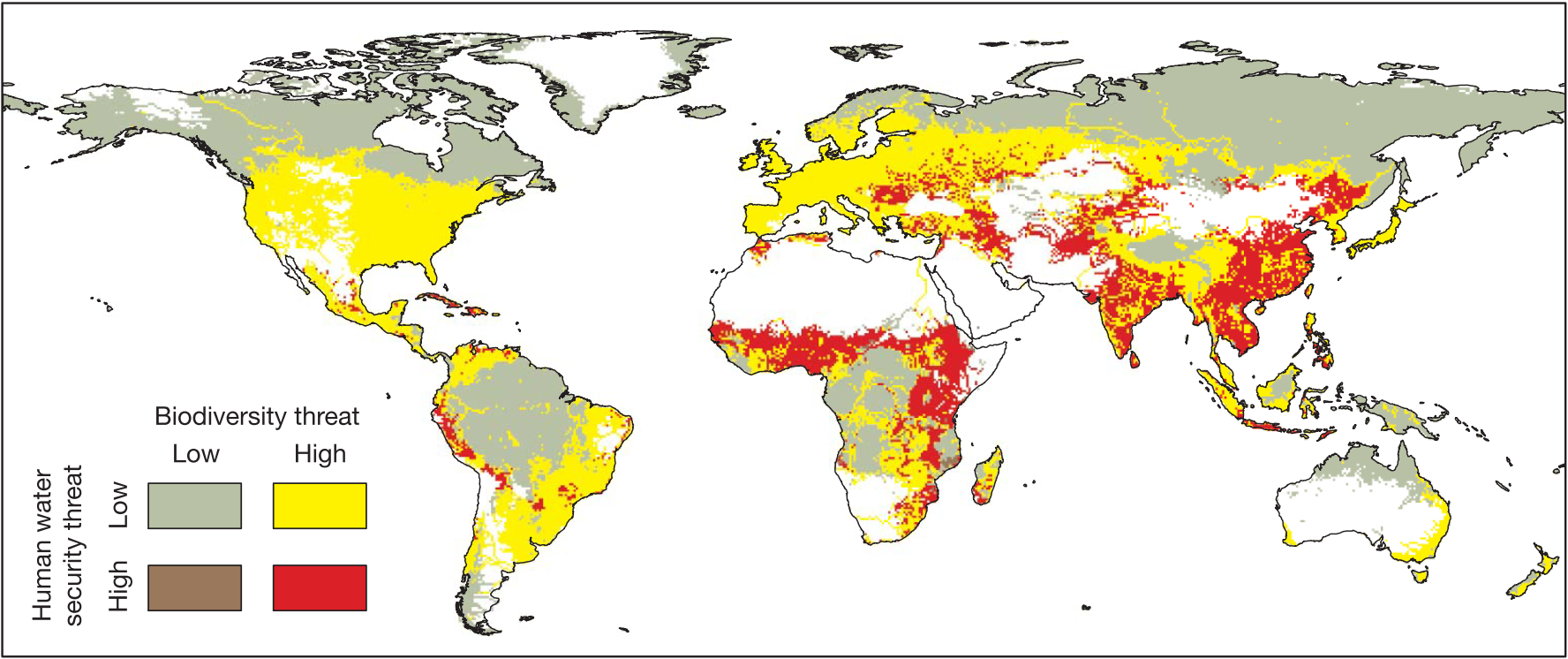
Human Water Security / Biodiversity Threat (Source: Nature)
Turning to biodiversity more specifically, the Nurse then offered the splendid news that my freshwater biodiversity was in a “state of crisis”, citing three human drivers: catchment disturbance, pollution and resource development. When I then caught Nurse Vörösmarty whispering to Dr Pekel et al and Dr Mekostra about the Living Planetary Index statistic that “my freshwater species populations had suffered an 81% decline between 1970 and 2012“, I couldn’t really bear it anymore. Who did these humans actually think they were?
Irrational animals
As you might well now appreciate, I couldn’t care less about human water scarcity. I am, however, very worried about the declining biodiversity they’re causing. As I wandered from the appointment purportedly happy I was “in the green but deteriorating” I couldn’t kick an old quote from my head. Ironically from a human — not even a wise old planet — philosopher Bertrand Russell had spoken truth when he’d quipped:
“It has been said that man is a rational animal. I have been searching my whole life for evidence of that”.
On that note, a big thanks must go out to the insights of Dr Pekel et al, Dr Mekostra and Nurse Vörösmarty. Some humans were indeed rational after all.
Yours for awhile,
Bluey
